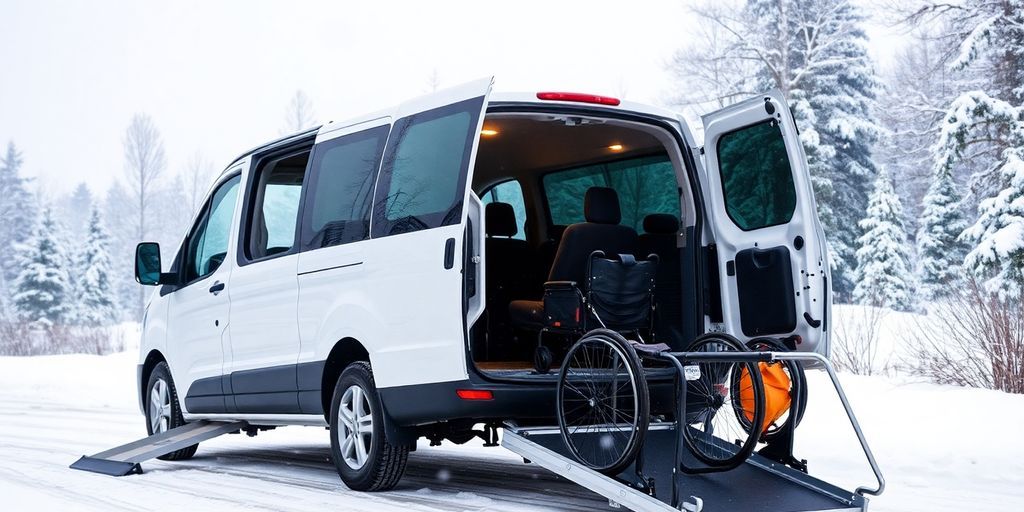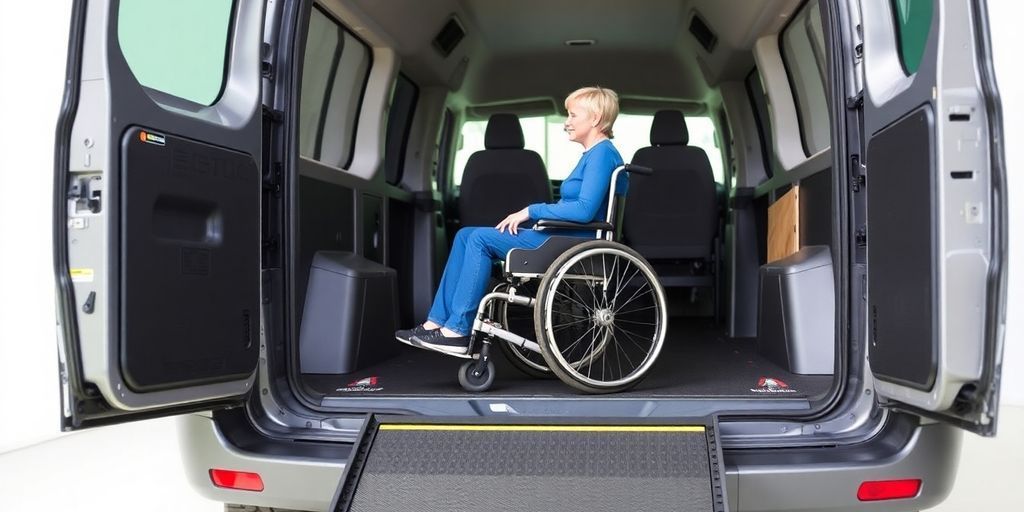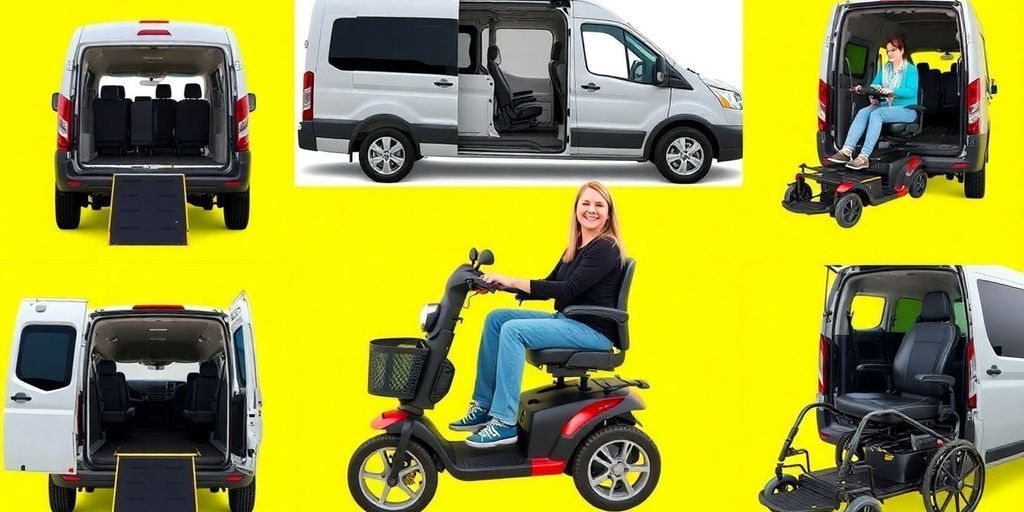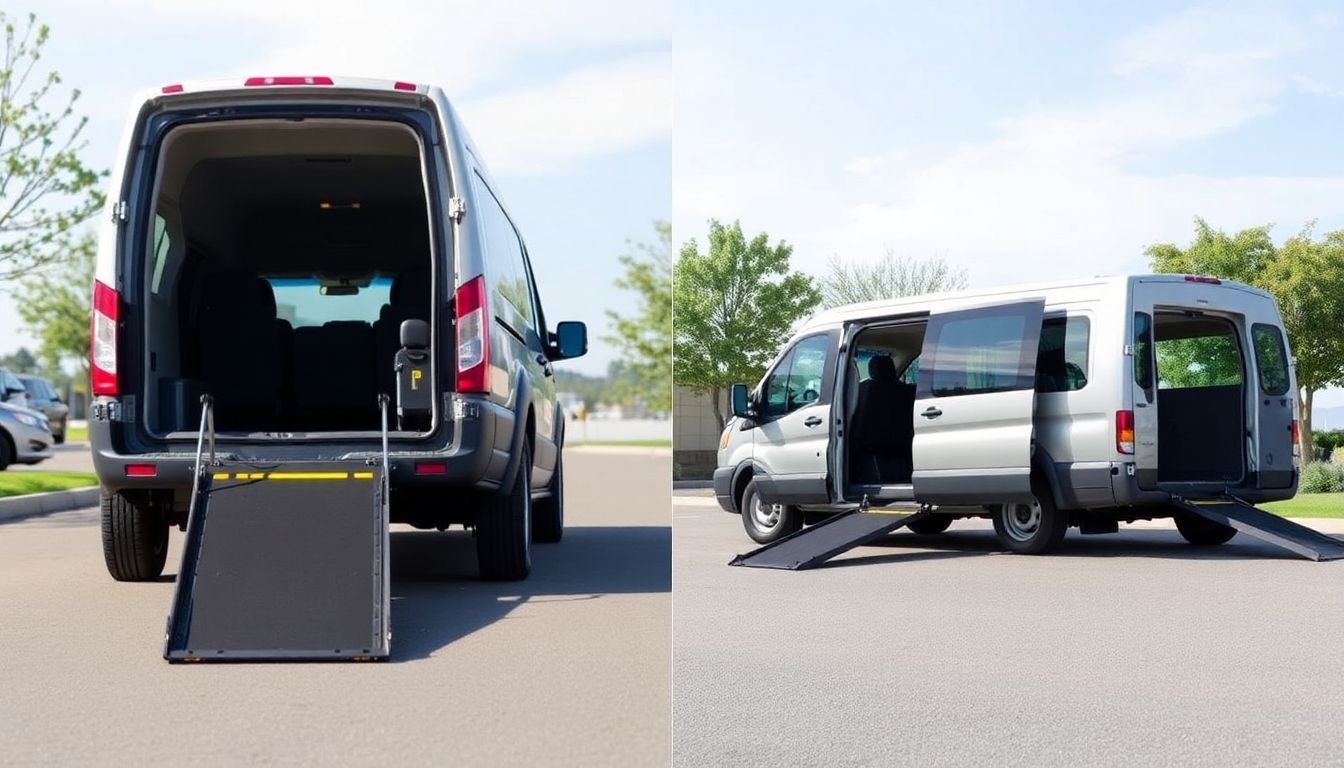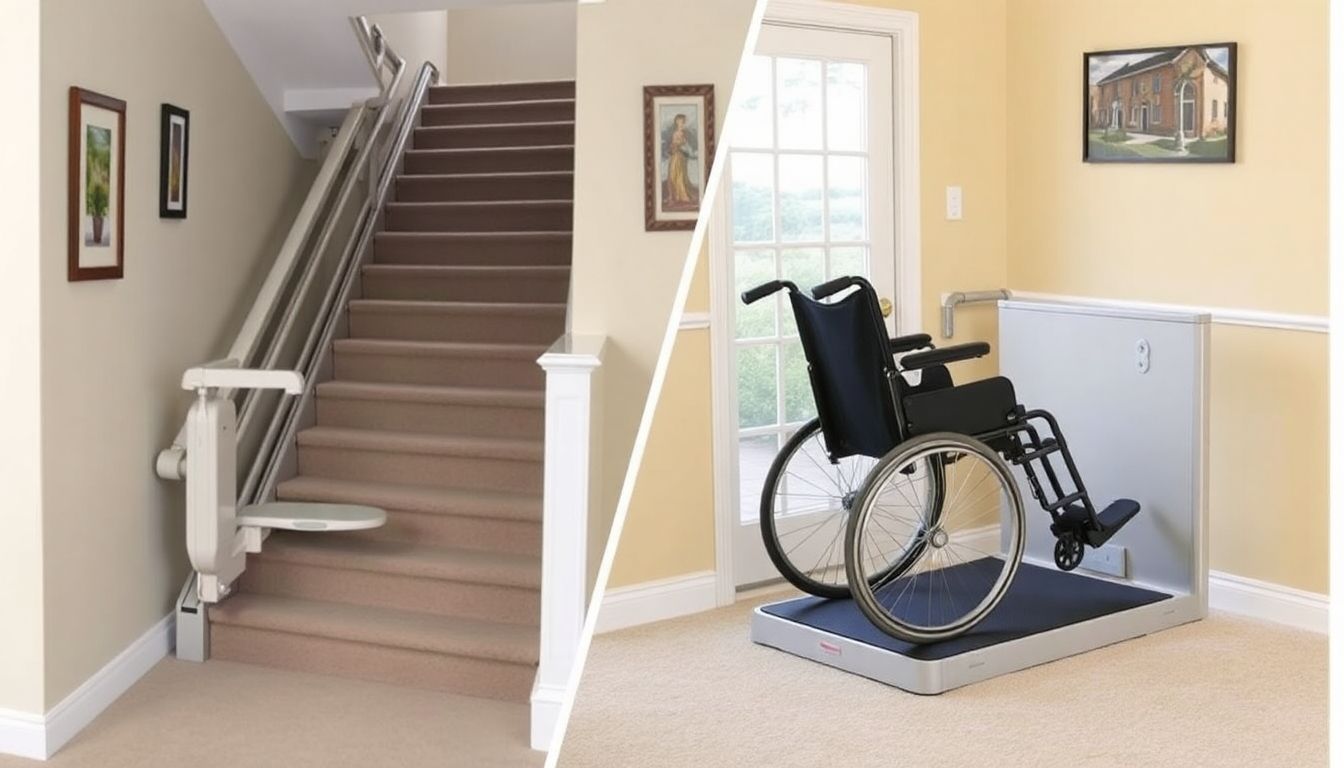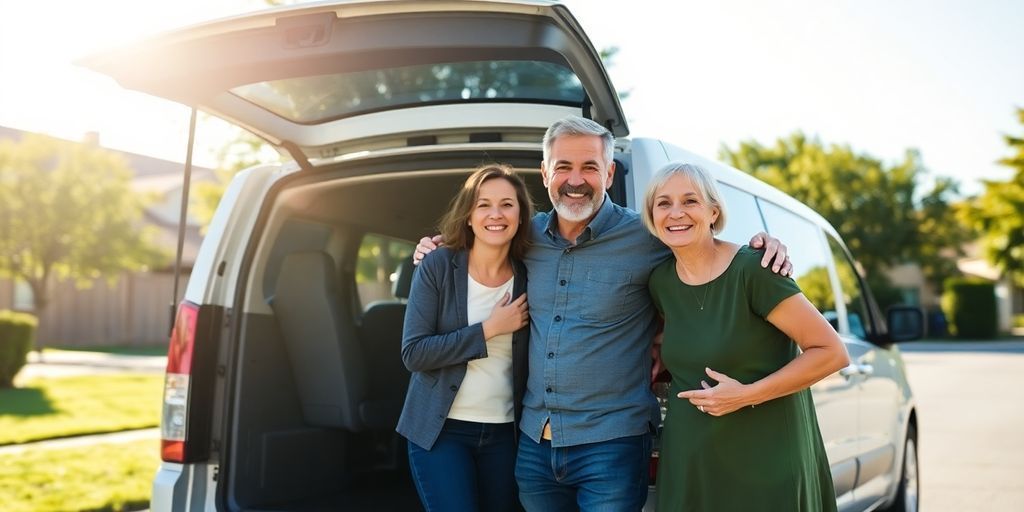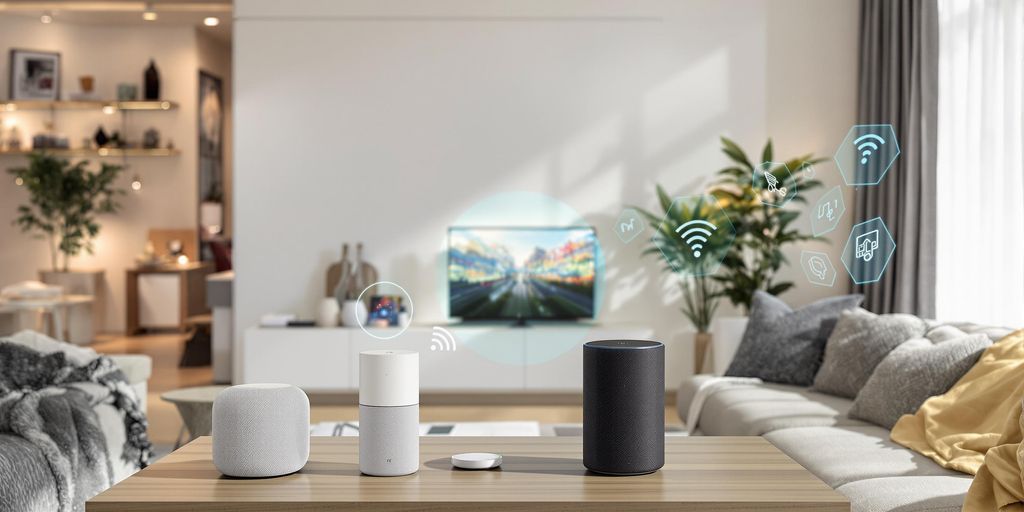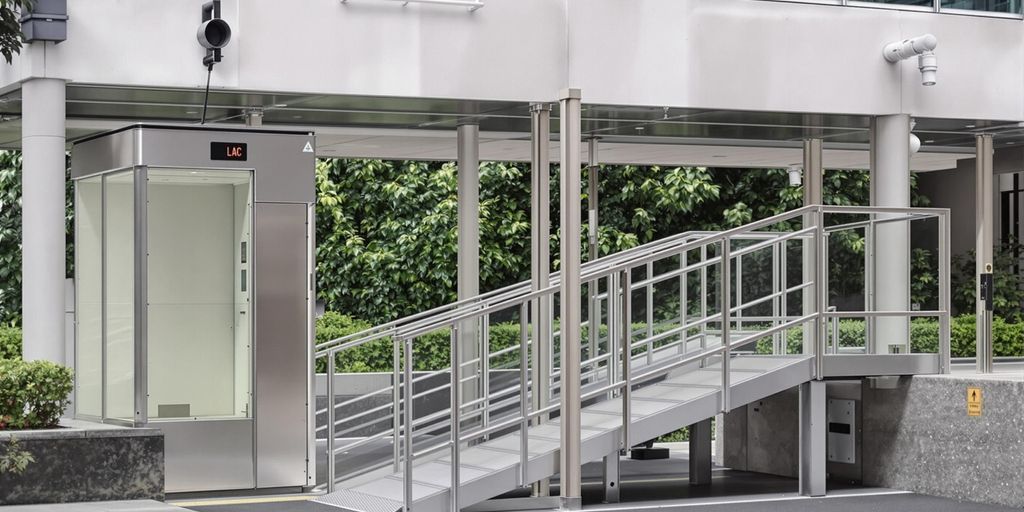Home Modifications Industry Secrets: Preparing Your Home for Accessibility
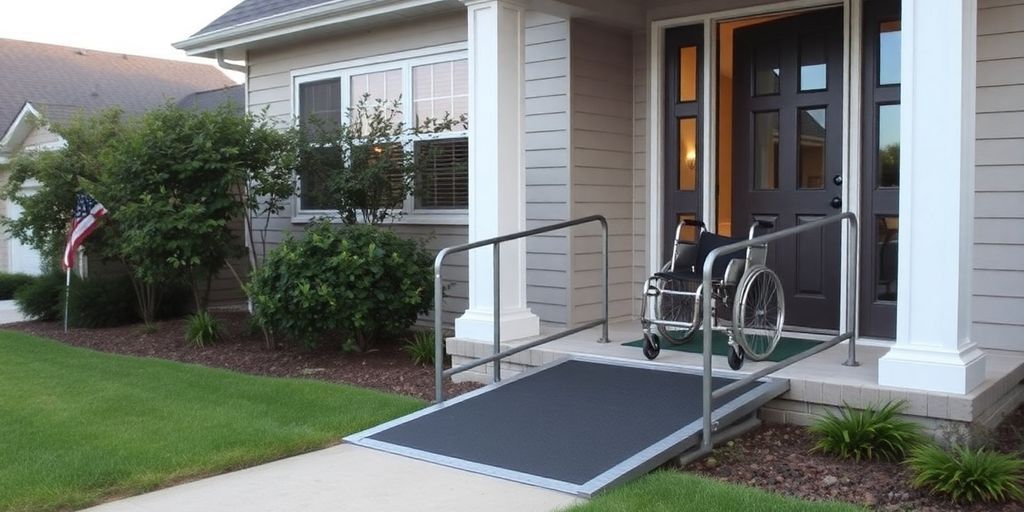
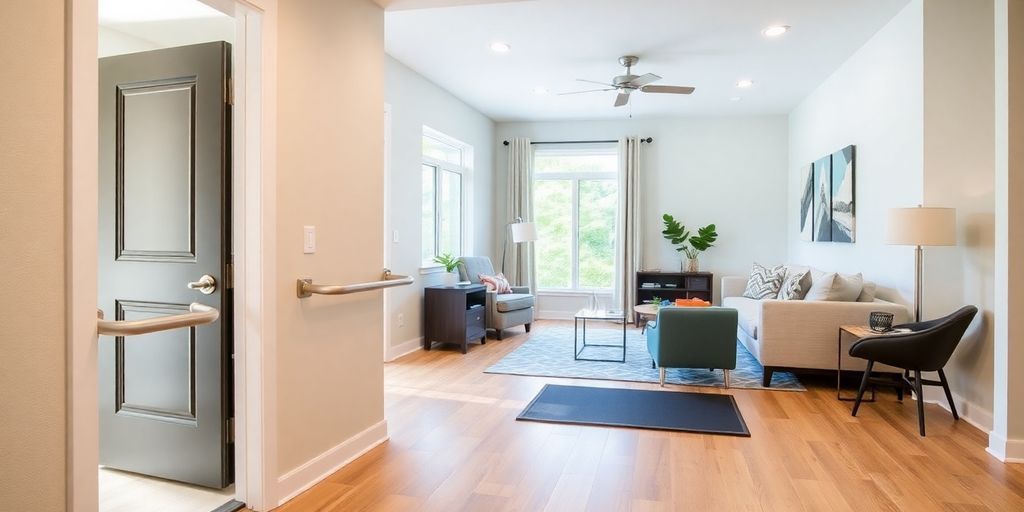
So, you're thinking about making your home more accessible? It's a big step, but totally worth it. Whether it's for yourself or a loved one, creating a space that's easy to navigate can make everyday life so much smoother. There's a lot to consider, from simple fixes like better lighting to bigger projects like installing ramps. Let's dive into some key takeaways to help you get started on this journey.
Key Takeaways
- Start with the most used areas of your home for modifications.
- Consult with professionals to get tailored advice and solutions.
- Consider funding options like government grants or loans.
- Regularly maintain and update accessibility features for longevity.
- Simple changes can significantly enhance safety and comfort.
Understanding the Basics of Home Modifications for Accessibility
Why Accessibility Matters in Home Design
Accessibility in home design is about creating spaces where everyone, regardless of their physical abilities, can live comfortably and independently. It's not just about convenience; it's about ensuring safety and dignity for those with mobility challenges or disabilities. Without proper accessibility features, simple daily tasks can become daunting, reducing the quality of life. By making homes accessible, we promote inclusivity and allow individuals to maintain their independence and participate fully in everyday activities.
Common Barriers in Traditional Homes
Traditional homes often come with a set of barriers that can hinder mobility and accessibility. These include:
- Narrow doorways that make it difficult for wheelchair users to move around freely.
- Steep stairs that pose a challenge for those with mobility issues.
- Bathrooms that are not equipped with grab bars and non-slip flooring, increasing the risk of falls.
Identifying these barriers is the first step towards creating a more accessible living space.
Benefits of Accessibility Improvements
The benefits of making accessibility improvements are manifold:
- Increased Safety: Reduces the risk of accidents and falls, especially in high-risk areas like bathrooms and kitchens.
- Enhanced Independence: Allows individuals to move around their homes without assistance, boosting their confidence and self-reliance.
- Improved Quality of Life: By removing obstacles, individuals can participate more fully in home life and activities.
Making these changes not only improves the living conditions for those with disabilities but also adds long-term value to the property. It's a wise investment in comfort and safety for everyone in the home.
Key Modifications for Enhancing Home Accessibility
When it comes to making your home more accessible, there are several key modifications that can make a huge difference. These changes not only improve mobility but also enhance safety and comfort for everyone in the household. Let's look at some of the most effective modifications you can consider.
Installing Ramps and Lifts for Easy Access
For anyone using a wheelchair or having difficulty with stairs, ramps and lifts can be game-changers. Ramps provide a smooth transition from the outdoors to the inside, eliminating the need to navigate steps. When installing ramps, make sure they are wide enough and have a gentle slope to ensure safety and ease of use.
Lifts, on the other hand, are perfect for homes with multiple levels. They can be installed indoors or outdoors, providing a convenient way to move between floors without the hassle of stairs. Consider a stairlift for a more compact solution that fits directly onto your existing staircase.
Widening Doorways and Hallways
Narrow doorways and cramped hallways can be quite the barrier for wheelchair users or anyone with mobility aids. By widening these spaces, you create a more open and accessible environment. This modification involves adjusting the door frames and possibly relocating light switches or outlets to maintain functionality.
Choosing Non-Slip Flooring Options
Slips and falls are a common concern in any home, but they can be particularly dangerous for those with mobility issues. Choosing the right flooring can significantly reduce this risk. Opt for non-slip materials like textured vinyl, rubber, or low-pile carpet. These options provide better traction and are easier to navigate with wheelchairs or walkers.
A well-thought-out home modification plan not only improves daily living but also provides peace of mind for everyone involved. Making these changes can transform your home into a space that is welcoming and safe for all.
By focusing on these key modifications, you're taking important steps toward a more accessible and inclusive home environment. Whether it's installing ramps or choosing the right flooring, each change contributes to a more comfortable living space for everyone.
Bathroom and Kitchen Modifications for Safety and Comfort
Installing Grab Bars and Shower Seats
Making your bathroom safer is a must, especially if you're worried about slips and falls. Grab bars are a simple addition that can make a huge difference. Install them near the toilet and inside the shower or bathtub. They provide that extra bit of support when you need it most. And don't forget shower seats—they're great for anyone who finds standing for long periods difficult. These seats can transform your shower into a safer and more comfortable space.
Optimizing Bathroom Layout for Mobility
A well-thought-out bathroom layout can help you move around more freely. Make sure there's enough space to turn and move, especially if you're using mobility aids. Keep essential items like towels and toiletries within easy reach to avoid unnecessary stretching or bending. And if sitting and standing is a challenge, consider a raised toilet seat. This small change can make a big difference in daily comfort.
Creating a bathroom that prioritizes safety and ease of use is essential for maintaining independence at home. Simple adjustments can lead to significant improvements in both safety and comfort.
Selecting User-Friendly Kitchen Appliances
When it comes to the kitchen, choosing the right appliances is key. Look for models with large, easy-to-read buttons, which can be a lifesaver if your eyesight isn't what it used to be. Appliances with automatic shut-off features are also a smart choice—they add an extra layer of safety. Plus, opting for appliances that are easy to clean and maintain can save you a lot of hassle in the long run.
These adjustments not only make your home more accessible but also enhance your overall quality of life. By focusing on these key areas, you can create a living space that's both safe and comfortable, allowing you to enjoy your home to the fullest.
Consulting with Professionals for Effective Home Modifications
Hiring Certified Aging-in-Place Specialists
When you're thinking about making your home more accessible, one of the first steps is to hire a Certified Aging-in-Place Specialist (CAPS). These professionals are trained to understand the specific needs of older adults and can guide you through the process of making your home safer and more comfortable. They offer personalized solutions that cater to your unique situation.
Here's what they can do for you:
- Assessment: They'll evaluate your home to identify potential hazards and suggest modifications.
- Design: They'll help design a plan that incorporates necessary changes like wider doorways or non-slip flooring.
- Coordination: They often coordinate with other professionals such as contractors or occupational therapists to ensure the modifications meet your needs.
Having a CAPS on your team can make the whole process smoother and more efficient, ensuring that the changes to your home are both practical and beneficial.
Working with Licensed Contractors
Once you have a plan, the next step is to find the right contractor to execute it. This is where licensed contractors come in. They are responsible for turning the design into reality, ensuring all modifications are done safely and correctly.
Key steps to find the right contractor:
- Recommendations: Ask friends or family who have had similar work done for referrals.
- Research: Look up reviews online and check their past work.
- Credentials: Ensure they have the necessary licenses and insurance.
A reliable contractor will work closely with your CAPS to make sure everything goes according to plan. Offering consulting and project oversight, they help ensure homes are tailored for specific accessibility needs.
Getting Professional Assessments and Recommendations
Before diving into modifications, getting a professional assessment is crucial. This helps you understand what changes are necessary and how they can improve your living space.
Benefits of a professional assessment:
- Comprehensive Evaluation: Professionals can spot hazards you might miss, like poor lighting or narrow hallways.
- Tailored Advice: They provide advice based on your specific needs and budget.
- Regulatory Guidance: They help ensure your modifications comply with local building codes and regulations.
A thorough assessment can set the stage for successful home modifications, ensuring your home is not only accessible but also safer and more comfortable for years to come.
Financing Your Home Accessibility Improvements
Exploring Government and Non-Profit Funding Options
So, you’re thinking about making your home more accessible, but the costs are making you sweat a bit? Don’t worry, there are ways to ease that burden. Government and non-profit grants can be a lifesaver. These organizations often provide funds to help cover the cost of home modifications. You might want to check out home modification grants from various federal, state, and local organizations. They offer a list of available grants and low-cost loans.
Here’s what you could find:
- Federal Grants: These are typically available for veterans or low-income families.
- State Programs: Each state might have different programs, so it’s worth checking what’s available in your area.
- Non-Profit Organizations: Groups like Habitat for Humanity sometimes offer assistance for those needing home modifications.
Considering Home Equity Loans and Lines of Credit
If grants and non-profits don’t cover everything, tapping into your home’s equity might be the next step. Home equity loans or lines of credit allow you to borrow against your home’s value. It’s a bit like a mortgage, but usually with a lower interest rate because your house is the collateral.
Here’s how it works:
- Assess your home’s value: Get an appraisal to see how much equity you have.
- Apply for a loan: Contact your bank or a credit union to discuss your options.
- Use the funds wisely: Make sure you only use what you need for the modifications.
Consulting with Financial Advisors for Best Options
Sometimes, it’s just too much to figure out on your own. A financial advisor can help you navigate these waters. They’ll look at your financial situation and help you choose the best funding option.
It’s not just about getting the money; it’s about making smart choices that won’t leave you in a bind later. A good advisor can be your best friend in this process.
Remember, making your home accessible is an investment in your future comfort and safety. Don’t rush it; take the time to explore all your options.
Maintaining and Updating Accessibility Features
Regular Maintenance Tips for Longevity
Keeping your home's accessibility features in top shape means doing regular check-ups. Inspect ramps, handrails, and non-slip flooring for wear and tear. It's a good idea to make a checklist and go through it every few months. This way, you can catch small issues before they turn into big problems.
- Ramps and Lifts: Check for any signs of rust or damage. Make sure they operate smoothly.
- Handrails: Tighten any loose screws and ensure stability.
- Flooring: Look for worn-out areas that might need replacing.
Staying on top of maintenance not only keeps things safe but also extends the life of your modifications.
When to Upgrade Your Accessibility Features
Sometimes, it's not just about maintaining – you might need to upgrade. If your needs have changed or if there's new technology available, it might be time for an update. Consider adding smart home features like voice-activated lights or automated doors for added convenience.
- Smart Home Tech: Integrate with existing systems to enhance functionality.
- Outdated Features: If something feels outdated, it probably is. Evaluate if it still meets your needs.
- Professional Assessment: Get an expert to evaluate your home for potential improvements.
Ensuring Long-Term Usability and Safety
Long-term usability is all about planning ahead. Choose quality materials and get professional installations. Regular updates and adjustments ensure your home remains a safe haven.
- Quality Materials: Invest in durable options that withstand daily use.
- Professional Installation: Ensure everything is installed correctly for maximum efficiency.
- Periodic Reviews: Schedule regular assessments to adapt to changing needs.
Keeping your home accessible and safe requires ongoing attention and investment. By staying proactive, you can ensure that your living space remains accommodating to your individual needs.
For those considering handicap renovations, remember that these changes can significantly boost your home's value, sometimes by over 30%.
Real-Life Success Stories of Home Modifications
Case Study: The Smith Family's Accessible Home
The Smiths faced a major life change when their youngest, Sarah, was diagnosed with a mobility impairment. They knew that their two-story home needed some serious changes. They started with the basics, installing a ramp at the entrance and modifying the bathroom to include grab bars and a roll-in shower. These adjustments were game-changers, making their home not just safer but a lot more comfortable for Sarah. The family now enjoys a better quality of life, knowing that their home is a safe haven for everyone.
Innovative Solutions in Urban Apartments
Living in a bustling city apartment poses unique challenges for accessibility. One inspiring story is about a couple who transformed their compact apartment into an accessible paradise. They used space-saving solutions like pull-out shelves and adjustable countertops, which made their kitchen more user-friendly. They also installed a vertical lift in their building, which was a huge help for getting around without stairs. These changes not only made the apartment more functional but also enhanced their daily living experience.
Transforming Historic Homes for Modern Accessibility
Historic homes are beautiful but often lack modern accessibility features. One family took on the challenge of renovating their Victorian house to accommodate their aging parents. They widened doorways, installed a stairlift, and opted for innovative solutions like the FlexStep by LiftUp, which blends style with functionality. This not only preserved the charm of their home but also made it a safe and welcoming space for everyone. The project was a labor of love, ensuring that the home remained a family treasure while being accessible to all.
Real-life stories like these show that with a bit of creativity and the right resources, any home can be transformed into an accessible space. These modifications not only improve accessibility but also significantly enhance the quality of life for individuals and their families.
Discover how real people have transformed their homes to enhance their lives. From simple adjustments to major renovations, these inspiring stories show the power of home modifications. Ready to make a change? Visit our website for a free quote and see how we can help you achieve your mobility goals!
Conclusion
Wrapping up, making your home more accessible isn't just about convenience—it's about creating a safe and welcoming space for everyone, regardless of age or ability. Whether it's adding grab bars, improving lighting, or removing tripping hazards, these changes can really make a difference. It's not just about big renovations; sometimes, small tweaks can have a huge impact. Take a look around your home and see what you can do to make it safer and more comfortable. With a few thoughtful adjustments, you can enjoy your home without worry and maintain your independence for years to come.
Frequently Asked Questions
What are some easy ways to make my home more accessible?
You can start by adding ramps at entrances, widening doorways, and installing grab bars in the bathroom. These changes help everyone move around safely.
How can I make my bathroom safer for everyone?
Install non-slip mats, grab bars near the toilet and shower, and consider a walk-in shower to prevent accidents.
What should I think about when choosing a stairlift?
Look at the type of stairlift you need, such as straight or curved. Make sure it fits your stairs and has safety features like seatbelts.
How can I make my kitchen easier to use for someone with mobility issues?
Lower countertops, use pull-out shelves, and choose appliances with easy-to-reach controls to make the kitchen more user-friendly.
Why is it important to keep my home accessible?
An accessible home helps you live safely and independently, especially if you have mobility challenges or live with someone who does.
How often should I check my home for safety?
It's good to check regularly, especially after bad weather or if your needs change, to make sure everything is still safe and accessible.

